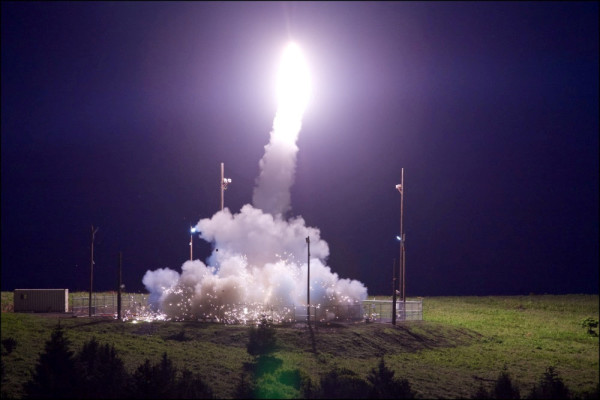

BERLIN (Reuters) – The U.S. military has deployed its most advanced air and missile defense system to Israel for the first time, U.S. and Israeli military officials said on Monday.
The deployment, which began in March, was intended to test the U.S. military’s ability to rapidly deploy such weapons around the world, said a spokeswoman for U.S. European Command.
Israeli Prime Minister Benjamin Netanyahu welcomed the arrival of the Terminal High Altitude Area Defense (THAAD) system as a sign of the U.S. commitment to Israeli security.
“The American THAAD system is considered among the most advanced systems in the world, and together with our defense systems, we are stronger in dealing with threats, close or distant, emanating from all areas of the Middle East,” he said.
The move comes amid increased tensions between Israel and Iran over Israel’s bombing campaign in Syria and comments in which Iran’s foreign minister said he could not rule out the possibility of military conflict between the two countries.
The U.S. military said the decision to rapidly move the THAAD system to Israel was intended “as a demonstration of the United States’ continued commitment to Israel’s regional security.”
“THAAD is the most advanced integrated air and missile defense system in the world, and this deployment readiness exercise demonstrates that U.S. forces are agile and can respond quickly and unpredictably to any threat, anywhere, at any time,” U.S. European Command said in a statement.
Lockheed Martin, the biggest U.S. arms maker, builds and integrates the THAAD system, which is designed to shoot down short-, medium- and intermediate-range ballistic missiles. Raytheon, another U.S. firm, builds its advanced radar.
As part of the deployment, U.S. forces will work at various locations in Europe, the United States and in Israel to operate the system in close cooperation with the Israel Defense Forces, it said. U.S. officials declined to say how quickly the system was moved to Israel from its home base at Fort Bliss, Texas.
Israeli military spokesman Lieutenant Colonel Jonathan Conricus said the deployment differed from previous simulated U.S.-Israel joint military exercises and involved tactical coordination on the ground.
He said all of the components of the THAAD system were at an air force base in the Negev desert, in southern Israel, and would soon be moved to an undisclosed site in southern Israel.
“The advantage from the Israeli point of view is that we have an opportunity to integrate it into our systems and simulate different scenarios,” he said.
The IDF said the deployment was defensive in nature and not related to any specific current event.
Saudi Arabia agreed in November to buy 44 THAAD launchers, missiles and related equipment from the United States in a separate deal valued at $15 billion.
(Reporting by Andrea Shalal in Berlin and Rami Ayyub and Dan Williams in Jerusalem; editing by Thomas Seythal and Janet Lawrence)